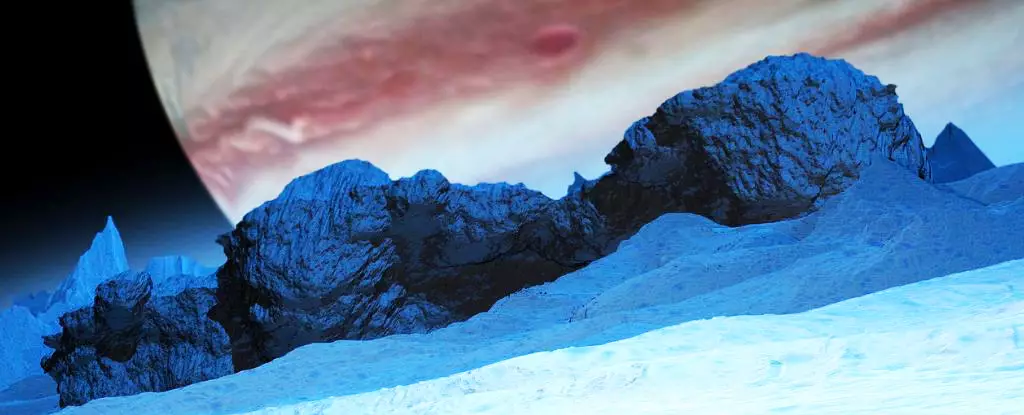Europa, one of Jupiter’s icy moons, has long been considered a promising candidate for hosting extraterrestrial life within our solar system. The recent Juno mission to Jupiter provided a groundbreaking opportunity to directly sample Europa’s atmosphere in unprecedented detail. This mission aimed to shed more light on the habitability of this intriguing moon.
Evidence from previous missions, such as Galileo, has revealed compelling characteristics of Europa that make it an exciting prospect for finding microbial life. The presence of a subsurface ocean, which contains twice the amount of water as Earth’s oceans, coupled with the proximity of rock at the ocean floor, sets the stage for potential chemical water-rock interactions that could provide energy sources conducive to life. Furthermore, observations of a weak oxygen-rich atmosphere, intermittent water plumes, and the presence of essential chemical elements on its surface point towards the possibility of Europa harboring life.
Challenges and Uncertainties
Despite the favorable conditions for life on Europa, several challenges and uncertainties remain. While the moon possesses the necessary components for life – water, essential chemical elements, and a source of heat – the question of whether life has had enough time to develop is still unanswered. The comparison with other potential habitats, such as Mars, Enceladus, and Titan, adds further complexity to the search for life beyond Earth. Each of these celestial bodies presents unique environments and challenges that need to be considered in the quest for extraterrestrial life.
The Juno mission’s detection of charged particles on Europa’s surface provides valuable insights into the moon’s atmospheric processes. By measuring the energy, direction, and composition of charged particles, the mission has unveiled the presence of molecular oxygen and hydrogen ions emanating from the surface and atmosphere. These measurements suggest a lower rate of oxygen production than previously estimated, indicating minimal erosion of Europa’s surface. The implications of these findings on the moon’s potential to host life raise intriguing questions about the dynamics of its atmosphere and surface interactions.
Implications for Europa’s Habitability
The revelation of Europa’s limited oxygen production and erosion processes has implications for its habitability. While some oxygen may reach the subsurface ocean and potentially support life, the overall loss of oxygen from the moon’s atmosphere is a point of concern. The recorded rate of oxygen loss may not be representative of long-term trends, highlighting the need for further research to understand the variability in Europa’s atmospheric processes. The complex interplay between plumes, orbital dynamics, and external conditions adds another layer of complexity to assessing the moon’s ability to sustain life.
Europa’s potential as a habitat for life beyond Earth remains an exciting and challenging area of exploration. The recent findings from the Juno mission have provided valuable insights into the moon’s atmospheric processes and shed light on its habitability. As we continue to unravel the mysteries of Europa and other celestial bodies in our solar system, the search for extraterrestrial life remains a fascinating journey filled with promise and uncertainty.


Leave a Reply